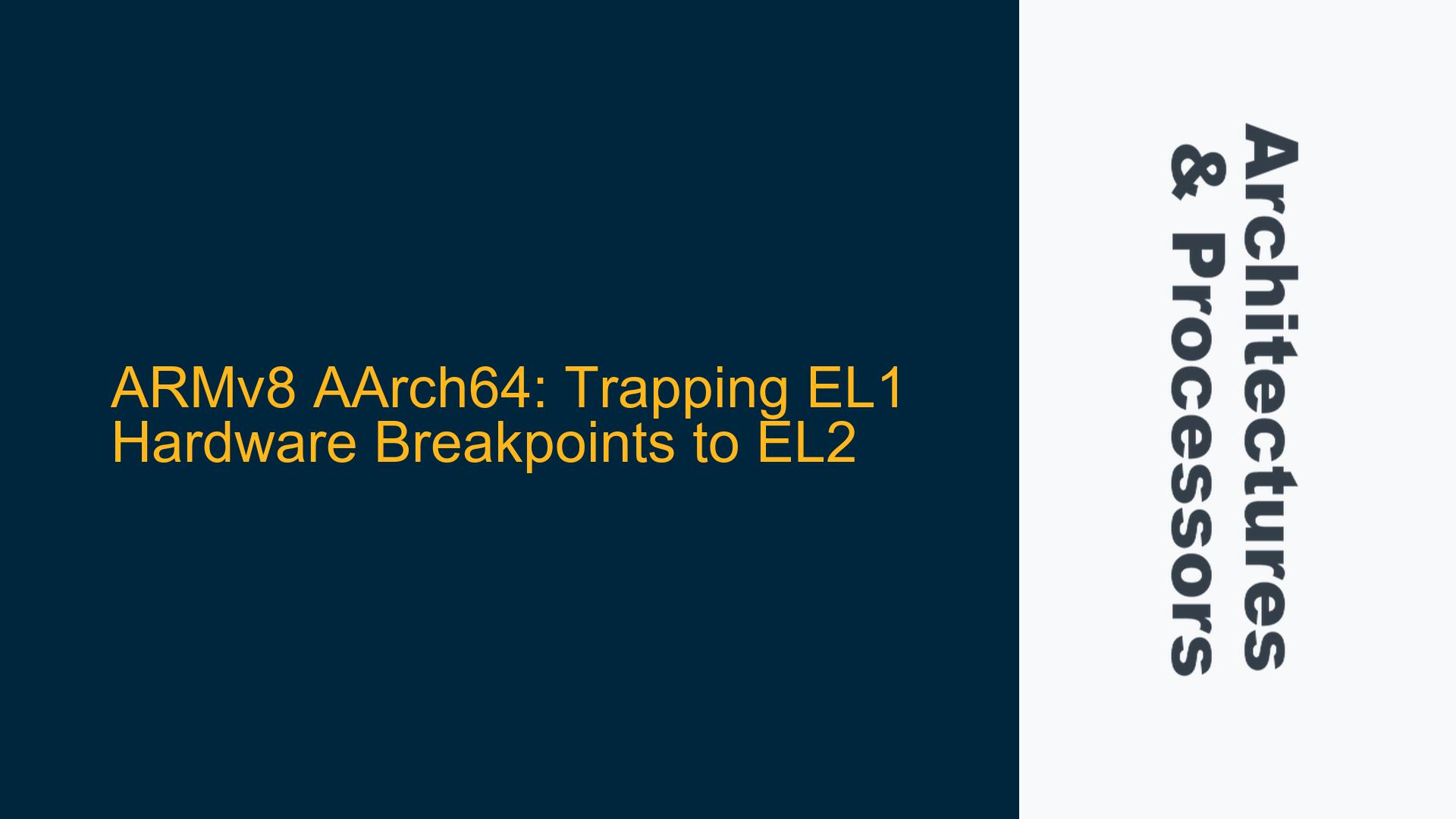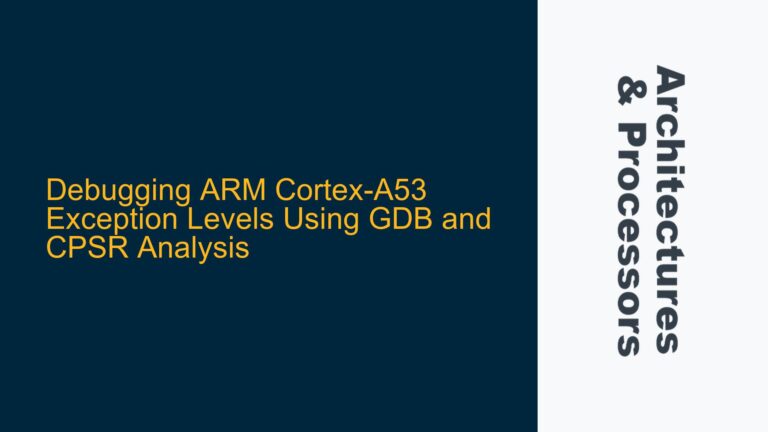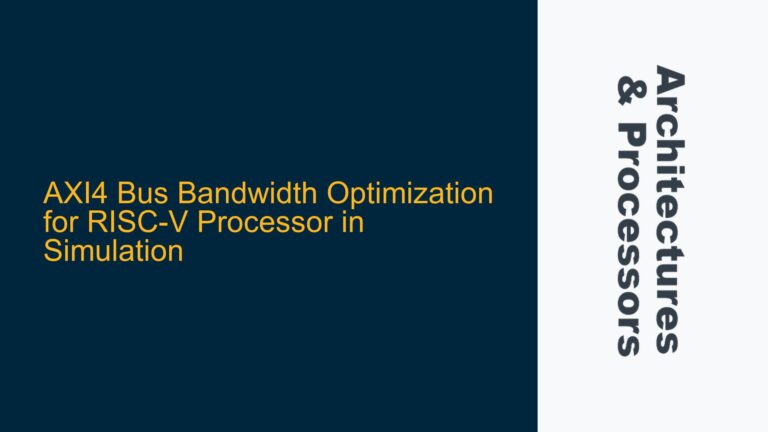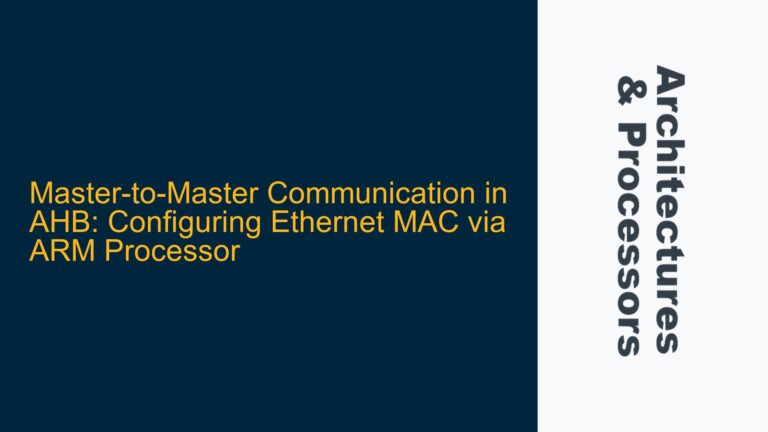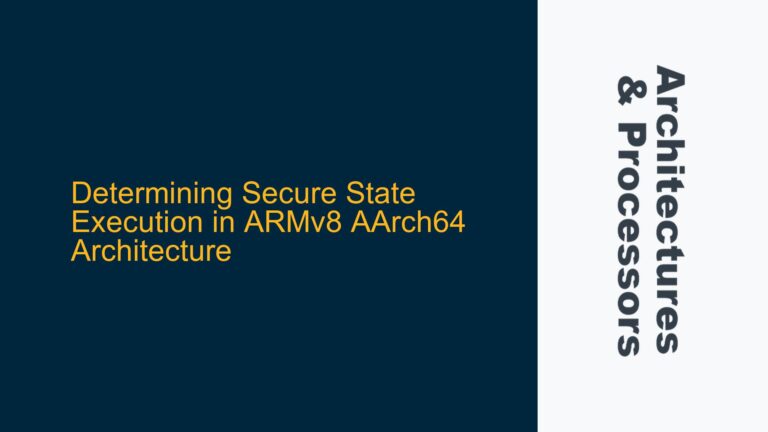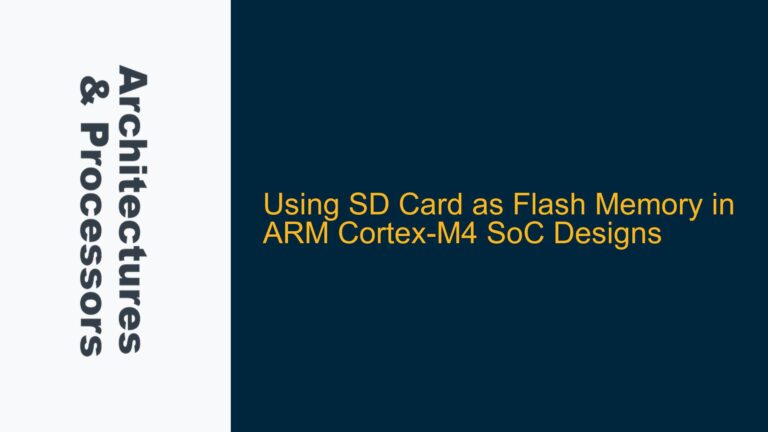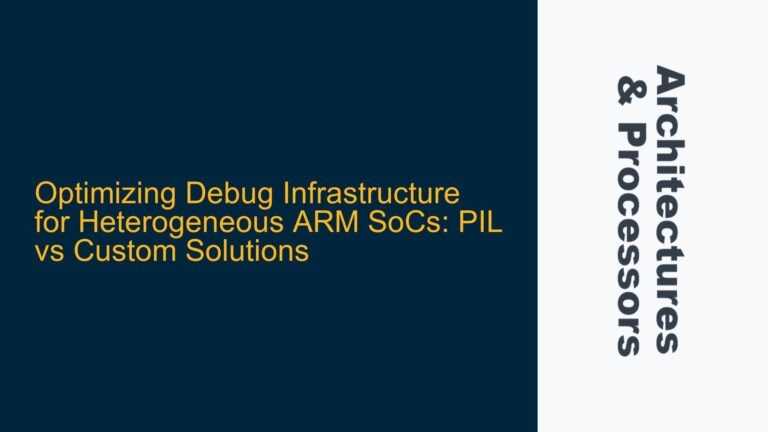EL1 Hardware Breakpoint Trapping to EL2 Configuration Challenges
The core issue revolves around the configuration and trapping of EL1 hardware breakpoints to EL2 in ARMv8 AArch64 architecture. The goal is to set a hardware breakpoint at a specific instruction address in EL1 and ensure that the exception generated by the breakpoint is trapped to EL2. The user has attempted to configure the necessary registers, including MDSCR_EL1, DBGBCR_EL1, DBGBVR_EL1, and MDCR_EL2, but the hardware breakpoint exception is not being triggered as expected. This suggests a potential misconfiguration or misunderstanding of the ARMv8 debug architecture, particularly in the interaction between EL1 and EL2.
The ARMv8 architecture provides a sophisticated debug mechanism that allows for both software and hardware breakpoints. Hardware breakpoints are particularly useful for debugging low-level code, as they can be set to trigger on specific instruction addresses without modifying the code itself. However, the process of setting and trapping these breakpoints across different exception levels (EL1 and EL2) involves a nuanced understanding of the ARMv8 debug registers and their interactions.
The user has correctly identified the need to enable the hardware breakpoint in EL1 and configure the breakpoint control and value registers (DBGBCR_EL1 and DBGBVR_EL1). Additionally, the user has set the MDCR_EL2.TDE bit to enable trapping of debug exceptions to EL2. Despite these configurations, the hardware breakpoint exception is not being trapped to EL2, indicating a potential issue with the breakpoint configuration or the trapping mechanism itself.
Misconfigured Breakpoint Registers and Trapping Mechanism
The primary cause of the issue lies in the potential misconfiguration of the breakpoint registers and the trapping mechanism. The ARMv8 architecture requires precise configuration of several registers to ensure that hardware breakpoints are correctly set and that exceptions are properly trapped to the desired exception level. The user’s configuration of MDSCR_EL1, DBGBCR_EL1, DBGBVR_EL1, and MDCR_EL2 may be incomplete or incorrect, leading to the failure of the hardware breakpoint to trigger the expected exception.
The MDSCR_EL1 register controls the debug system in EL1, and the MDE bit must be set to enable debug exceptions. The KDEPSTATE.D bit must also be cleared to ensure that the debug state is not masked. The DBGBCR_EL1 register configures the behavior of the hardware breakpoint, including whether it is enabled (E bit), whether it traps to EL2 (HMC bit), and the privilege level at which the breakpoint is active (PMC.EL2). The DBGBVR_EL1 register specifies the instruction address at which the breakpoint should trigger.
The MDCR_EL2 register controls the debug behavior in EL2, and the TDE bit must be set to enable trapping of debug exceptions to EL2. However, the interaction between these registers and the exact sequence of configuration steps can be complex, and any misstep can result in the breakpoint not being triggered or the exception not being trapped to EL2.
Additionally, the ARMv8 architecture includes several other factors that can affect the behavior of hardware breakpoints and their trapping. These include the state of the debug system, the privilege level at which the breakpoint is set, and the interaction between the breakpoint configuration and the trapping mechanism. Any oversight in these areas can lead to the observed issue.
Correct Configuration and Verification of Hardware Breakpoint Trapping
To resolve the issue, a detailed and methodical approach to configuring and verifying the hardware breakpoint trapping mechanism is required. The following steps outline the necessary actions to ensure that the hardware breakpoint is correctly set and that the exception is properly trapped to EL2.
First, ensure that the MDSCR_EL1 register is correctly configured. The MDE bit must be set to enable debug exceptions in EL1, and the KDEPSTATE.D bit must be cleared to ensure that the debug state is not masked. This can be achieved by writing the appropriate value to MDSCR_EL1.
Next, configure the DBGBCR_EL1 register to define the behavior of the hardware breakpoint. The E bit must be set to enable the breakpoint, the HMC bit must be set to enable trapping to EL2, and the PMC.EL2 field must be set to specify that the breakpoint is active at EL2. The exact value to be written to DBGBCR_EL1 will depend on the specific requirements of the breakpoint.
The DBGBVR_EL1 register must be set to the instruction address at which the breakpoint should trigger. The address must be aligned to the instruction boundary, and the lower bits of the address must be cleared to ensure that the breakpoint is correctly recognized by the debug system.
Once the breakpoint registers are configured, the MDCR_EL2 register must be set to enable trapping of debug exceptions to EL2. The TDE bit must be set to enable trapping of debug exceptions, and any other relevant bits in MDCR_EL2 should be configured according to the system requirements.
After configuring the registers, it is essential to verify that the hardware breakpoint is correctly set and that the exception is properly trapped to EL2. This can be done by executing the code at the breakpoint address and observing the behavior of the system. If the breakpoint is correctly configured, the system should trap to EL2 and execute the appropriate exception handler.
If the breakpoint is not triggered, it is necessary to review the configuration of the registers and ensure that all steps have been correctly followed. This may involve checking the values written to the registers, verifying the alignment of the breakpoint address, and ensuring that the debug system is in the correct state.
In some cases, additional debugging tools may be required to diagnose the issue. These tools can provide detailed information about the state of the debug system and the behavior of the hardware breakpoint. By using these tools, it is possible to identify any misconfigurations or issues that may be preventing the breakpoint from being triggered.
In conclusion, the correct configuration and verification of hardware breakpoint trapping in ARMv8 AArch64 architecture requires a thorough understanding of the debug registers and their interactions. By following the steps outlined above, it is possible to ensure that the hardware breakpoint is correctly set and that the exception is properly trapped to EL2. This will enable effective debugging of low-level code and ensure the reliable operation of the system.
